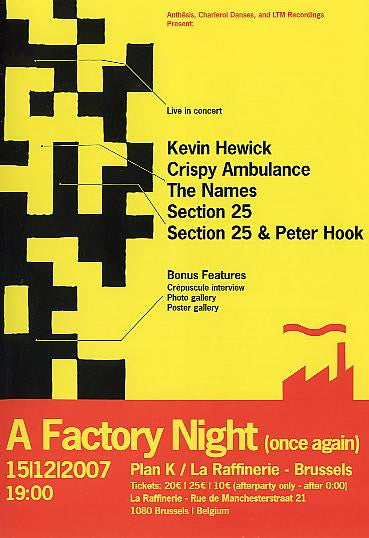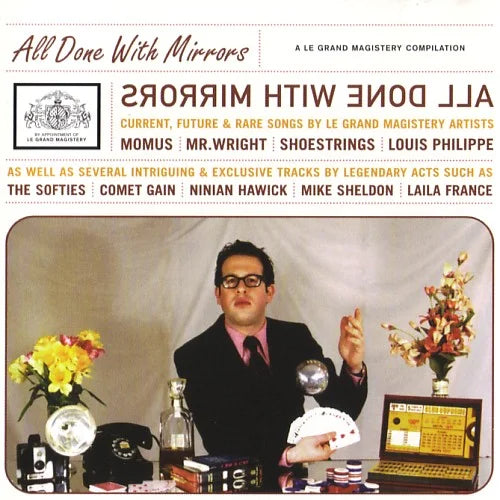An evocative double-disc set, The War at Sea 1939-45 features 150 minutes of archive audio recordings covering key aspects of the naval war against the Axis powers, including operations by surface vessels and submarines, as well as aircraft of the Fleet Air Arm and Coastal Command. Specific subjects covered include the vital Battle of the Atlantic, operations against German U-boats, the Arctic Convoys sent to northern Russia, MTB patrols, D-Day, and eyewitness accounts of famous actions against the German raiders Graf Spee, Bismark and Scharnhorst.
Notable naval vessels featured include HMS Jervis Bay, SS San Demetrio, HMS Norfolk, HMS King George V, HMS Eagle, HMS Onslow, HMS Vimy, HMS Duke of York, HMS Starling and the famous X-craft midget submarines. Aircraft types include the Short Sunderland flying boat and the remarkable Swordfish biplane torpedo bomber. Three Victoria Cross actions are also described. Featured personnel include admirals, gunners, captains, pilots, submariners, Wrens, mine disposal engineers and merchant seamen.
Available on CD and digital download. All materials are authentic wartime recordings which have been carefully digitally remastered. CD booklet includes archive images and detailed historical notes by James Hayward.
1. GRAF SPEE PRISONER: CAPTAIN DOVE
2. BATTLE OF THE RIVER PLATE: HMS EXETER
3. HMS JERVIS BAY: VICTORIA CROSS
5. ATLANTIC CONVOY: AIR ATTACK
6. WRNS: RECRUITMENT APPEAL
7. SINK THE BISMARK: HMS NORFOLK
8. SINK THE BISMARK: HMS KING GEORGE V
9. SINK THE BISMARK: HMS KING GEORGE V
10. FLEET AIR ARM: SWORDFISH
11. COASTAL COMMAND: CHANNEL STRIKE
12. SUBMARINE EXPERIENCES
15. BATTLE OF THE ATLANTIC: CORVETTES
16. ACTION STATIONS ON DESTROYER
17. RN CHATHAM CONCERT 1941 (PT 1)
1. RN CHATHAM CONCERT 1941 (PT 2)
2. THE CHANNEL DASH: MTB ATTACK
4. SUNDERLAND: OPERATIONAL PATROL
5. MALTA CONVOY: HMS EAGLE SUNK
7. HMS ONSLOW: VICTORIA CROSS
8. THE BATTLE OF THE BARENTS SEA
11. NORTH ATLANTIC: RAMMING U-125
12. SUNDERLAND'S DUEL WITH U-BOAT
13. COASTAL COMMAND: U-BOATS FIGHT BACK
14. DESTROYERS IN THE BAY
15. SCHARNHORST: HMS DUKE OF YORK
16. SCHARNHORST: HMS SAVAGE
17. SUBMARINE: HMS STUBBORN
18. HMS STARLING: 2 ESCORT GROUP
19. D-DAY: CONVOY ATTACKED IN CHANNEL
20. HMS MALAYA: ST MALO BOMBARDMENT
21. XE-3: LT IAN FRASER VC
When war broke out on 3 September 1939, the Royal Navy boasted the largest and most powerful fleet in the world, with 15 large battleships, 15 heavy cruisers, 46 light cruisers, 7 aircraft carriers, 181 destroyers and 59 submarines. Much of the main Home Fleet striking force was based at Scapa Flow, off the north coast of Scotland, with a smaller force at Plymouth. From Scapa, ships could be deployed to control both the North Atlantic and the North Sea. The Mediterranean Fleet was based at Alexandria in Egypt.
At first, the main task of the navy was to blockade Germany, and the protection of Britain's crucial maritime trade routes. However, the collapse of France in 1940 required an expansion of operations in the Mediterranean against the Italian navy, and also provided German submarines (U-Boats) with bases on the Atlantic coast, thus placing them much closer to the supply routes on which Britain now relied for survival. What followed was the long, bitter and bloody Battle of the Atlantic, of which Churchill remarked: 'The only thing that ever really frightened me during the war was the U-Boat peril.'
During this dark crisis period, morale was boosted by the destruction of a succession of German surface raiders, including the Graf Spee, Bismark and Scharnhorst. After the United States joined the war in December 1941, their naval forces assisted in the Atlantic, and at the same time allowed the Royal Navy to divert more vessels to the Mediterranean. Gradually the Allies developed increasingly successful anti-submarine measures, including the convoy system and long-range aircraft patrols by RAF Coastal Command, as well as improved detection technology such as ASDIC, and intelligence derived from Enigma code-breaking.
The Royal Navy also devoted significant resources to Combined Operations, culminating in the D-Day landings in Normandy in June 1944. In the air, it was assisted by the maritime wing of the RAF, Coastal Command, and by the Fleet Air Arm, which came under the direct control of the Admiralty. In the Far East the senior service suffered early defeats at the hands of Japan, and it was not until the second half of 1943 that the Navy was able to re-establish itself in this theatre. During the second half of 1944 the reduction of the sea war in Europe released the Royal Navy's major warships to join the Americans and other Allies in preparing the way for the final assault on Japan.
During the Second World War the Royal Navy lost 50,758 men killed, 820 missing, and 14,663 wounded. No less than 29,180 merchant seaman were also killed, and 4,700 British-flagged merchant ships lost.
1. GRAF SPEE PRISONER: CAPTAIN DOVE (5.33)
Recorded 17 January 1940. Talk by Captain Patrick Dove, a prisoner on board the German pocket battleship (heavy cruiser) Admiral Graf Spee. Launched in 1934, the Graf Spee operated as a commerce raider in the South Atlantic between September and December 1939, sinking nine Allied merchant ships including the motor tanker Africa Shell, Dove's ship. All merchant crews were taken prisoner and held on board the Graf Spee; 303 were transferred to the supply ship Altmark, but 62 were still on board during the Battle of the River Plate - including Dove, who had by then become quite friendly with Captain Hans Langsdorff. Damaged, the Graf Spee took refuge in the neutral port of Montevideo (Uruguay) on 13 December 1939, where the 62 prisoners were released. The Altmark prisoners were taken to Norwegian territorial waters, where they were liberated by HMS Cossack in February 1940. In 1940 Dove published a book, I Was Graf Spee's Prisoner. The 1956 film Battle of the River Plate adopted Dove's perspective, and as well as acting as a technical advisor he was played by Bernard Lee.
2. BATTLE OF THE RIVER PLATE: HMS EXETER (4.31)
Recorded 17 February 1940. Talk by an unidentified Midshipman, in charge of 4-inch gun quarters on the cruiser HMS Exeter. Britain had formed eight hunting groups to look for the Graf Spee, totaling three battleships, two battle cruisers, four aircraft carriers, and 16 cruisers. On 13 December she was located by Hunting Group G, comprising HMS Exeter and the light cruisers Ajax and Achilles. During the ensuing Battle of the River Plate, Graf Spee inflicted heavy damage on Exeter, forcing her to break off the engagement. However Graf Spee was hit repeatedly, sustaining significant topside damage. Exeter's 8-inch shells easily penetrated her armour, and at about 06:38 one exploded in the funnel area, causing severe internal damage.
3. HMS JERVIS BAY: VICTORIA CROSS (3.30)
Recorded November 1940. A collection of eyewitness accounts of the heroic action of the armed merchant cruiser HMS Jervis Bay, which attempted to engage the German pocket battleship Admiral Scheer on 5 November 1940, and was sunk with the loss of 190 crew. Her captain, Edward Fegen, was awarded a posthumous Victoria Cross, the citation praising 'valour in challenging hopeless odds and giving his life to save the many ships it was his duty to protect'. On encountering the Admiral Scheer, Jervis Bay (the sole escort attached to Convoy HX-84) warned the convoy to scatter, then closed on the enemy. This gallant sacrificial action won vital time for the merchant vessels, and only five were subsequently lost.
4. MV SAN DEMETRIO (4.10)
Recorded 17 November 1940. Second Officer Hawkins describes the action of HMS Jervis Bay, and subsequent events on board MV San Demetrio. San Demetrio had loaded 12,000 tons of aviation fuel in Galveston and left Halifax, Nova Scotia on 28 October, one of 38 ships in HX-84. Having sunk the Jervis Bay, Scheer tried to sink as many of the convoy as possible before darkness fell. San Demetrio was hit by several shells which left the upper deck in flames and destroyed the bridge and the poopdeck. Although the ship's cargo did not explode, her master believed the fire might set off the aviation fuel at any moment, and gave the order to abandon ship. Still under fire from Scheer, the crew escaped in two lifeboats, but later re-boarded San Demetrio and successfully brought her into harbour. She was the subject of a 1943 movie, San Demetrio London, one of the few films to recognise the heroism of the Merchant Navy crews. San Demetrio was repaired and returned to service, but was sunk by a torpedo from U-404 on 17 March 1942.
5. ATLANTIC CONVOY: AIR ATTACK (2.33)
Recorded 28 December 1940. An account by a gunner named Malham of his experiences on board an unidentified convoy ship, including a fish supper after the engagement.
6. WRNS: RECRUITMENT APPEAL (4.26)
Recorded 20 January 1941. A recruiting broadcast on behalf of the Women's Royal Naval Service by Princess Marina, Duchess of Kent. At this time cooks, stewards, clerks, bookkeepers, telegraphists and typists were required for shore-based work. At peak strength in September 1944 the WRNS numbered 74,000 women. Formed in 1917, the WRNS freed up manpower for service at sea, and was reformed for the same purpose in 1939. The WRNS had a reputation for recruiting from the middle classes, and generally relied upon volunteers rather than conscription. Wrens undertook some 200 different jobs, including planning and organisation, as well as support and maintenance. Wrens also worked on code decryption at Bletchley Park. During WW2 a total of 102 were killed on active service. Marina's husband, HRH The Duke of Kent, was killed in August 1942 when his Sunderland flying boat crashed into a Scottish hillside.
7. SINK THE BISMARK: HMS NORFOLK (7.25)
Recorded 28 May 1941. A talk by Rear-Admiral William Wake-Walker, who flew his flag on the cruiser HMS Norfolk. The formidable German battleship Bismark (Captain Ernst Lindemann) and heavy cruiser Prinz Eugen put to sea from Gdynia on 18 May, and were intercepted by elements of the Home Fleet in the Straits of Denmark on the morning of 24 May. HMS Hood, the famous Home Fleet flagship, was hit and blown apart by a cataclysmic explosion, sinking in two minutes with the loss 1,418 crew (and just three survivors), and the brand new HMS Prince of Wales sustained significant damage. Churchill then issued his famous order to 'Sink the Bismark!' Prinz Eugen afterwards escaped, but contact was maintained with the fast moving Bismark, resulting in a determined chase. On 26 May Swordfish aircraft from HMS Ark Royal scored two torpedo hits, jamming her steering gear. This allowed British heavy units to catch up, and the following morning Bismark was shelled to pieces by the battleships King George V and Rodney. Of the 2,200 crew, 1,995 were killed.
8. SINK THE BISMARK: HMS KING GEORGE V (3.10)
Recorded 4 June 1941. Talk by Petty Officer Wickham, a director layer on the battleship HMS King George V. A total of 2,876 shells of various calibres were fired at the Bismark, of which between 200 and 300 found their target. Having put up a gallant but hopeless fight, Bismark sank 650 kilometres west of Brest, France; some survivors claimed she was finally scuttled, rather than sunk by British fire.
9. SINK THE BISMARK: HMS KING GEORGE V (1.30)
Recorded 12 February 1943. John Byrd interviews two sailors in the cordite handling room on board the battleship HMS King George V, recalling their part in the action. HMS King George V was commissioned only in December 1940, and on the morning of 27 May 1941 fired 339 x 14 inch and 660 x 5.25 shells at the Bismark, part of a sustained 90 minute bombardment which devastated her superstructure and knocked out the main armament.
10. FLEET AIR ARM: SWORDFISH (6.23)
Recorded 29 May 1941. An account by Lieutenant Commander Anthony Kimmins of tactics and operations by Fairy Swordfish biplanes of the Fleet Air Arm, including the sinking of the Bismark. A torpedo bomber, the Swordfish entered service in 1936 and earned the affectionate nickname Stringbag from FAA crews. While outdated by 1939, it found significant success during the war, notably against the Italian navy in the Battle of Taranto, and the Bismarck. Swordfish operated mainly as a fleet attack aircraft, and were easy to operate from carriers such as HMS Ark Royal. Indeed the Swordfish outlived several types intended to replace it and remained in frontline service until the end of the war. Anthony Kimmins (1901-1964) joined the Navy during the First World War, and later served in the Fleet Air Arm. He then entered the film business as an actor, writer and director; during WW2 he worked first as a naval broadcaster, then on the staff of the Director of Naval Intelligence. He published an autobiography, Half Time, in 1948.
11. COASTAL COMMAND: CHANNEL STRIKE (6.00)
Recorded 17 July 1941. Recordings made at a Coastal Command aerodrome, introduced by John Byrd. These include an intelligence briefing, and post-operation interviews with Pilot Officer Stevens and Sergeant Griffiths. At this time Coastal Command and 2 Group units were attacking German supply vessels as part of the 'Channel Stop'.
12. SUBMARINE EXPERIENCES (3.47)
Recorded 14 June 1941. Sub-Lieutenant Beckett describes some of his experiences on board British submarines. Subjects covered include periscopes, conditions and pay, and use of torpedoes.
13. SEAMAN FRANK LASKIER (12.37)
Recorded 5 October 1941. Seaman Frank Laskier's Postscript to the News was based on his harsh experience at sea, and urged the British people to remember the hardships endured by merchant seaman. The Merchant Navy comprises the commercial and trading ships and crews employed in a country, and on the outbreak of WW2 came under the control of the Ministry of Shipping. Truly unsung heroes, no less than 30,000 merchant seaman were killed while serving on Allied convoy vessels during the conflict. Laskier's moving text was published in book form the following year as My Name Is Frank, A Merchant Seaman Talks, followed in 1942 by his Log Book. Laskier was also the subject of Seaman Frank Goes Back To Sea, a film produced for the National Savings Committee in February 1942. The recording on this CD was also issued on disc by HMV in 1941.
14. CHANNEL PATROL: MTB (5.07)
Recorded 6 October 1941. Lieutenant Sullivan, RNVR, describes a routine patrol by Motor Torpedo Boats off the coast of France, including an engagement with an enemy trawler. MTBs were developed to mount a rapid response to threats from any seagoing vessel, either warship or submarine. High speed (approximately 40 knots) and manoeuvrability on the water allowed them to get close enough to launch torpedoes at their chosen target. With little armour, MTBs relied on speed and agility to avoid being hit by gunfire from bigger ships. The German equivalent was the larger S-boot (Schnellboot), called the E-boat by the Allies.
15. BATTLE OF THE ATLANTIC: CORVETTES (4.33)
Recorded 21 May 1953. Lieutenant Commander Nicholas Monsarrat describes his experience on Corvettes, including the sinking of another Corvette, HMS Zinnia (K98), on 23 August 1941 by U-564, and the later sinking of an oil tanker. Monsarrat also describes the important role played by Corvettes in picking up survivors, and his role as a de facto medical officer. Monsarrat (1910-1979) was initially a pacifist, but joined the RNVR and served with distinction aboard small escort vessels, ending the war in command of a frigate. A novelist since 1934, he published Three Corvettes between 1942-45, and famously The Cruel Sea in 1951.
16. ACTION STATIONS ON DESTROYER (1.00)
Recorded 13 November 1941. Dialogue extract between personnel at action stations during a bombing attack at sea. As the raiders approach, the men continue an absorbing conversation about a pigeon: 'You get one 7 ounces, that's a heavy bird.'
17. RN CHATHAM CONCERT 1941 (PT 1) (2.00)
Recorded 23 December 1941. Bosun's Pipe and Call, followed by a stirring rendition of We Saw The Sea (We Owe the Navy an Awful Lot), written by Irving Berlin for the 1936 film Follow the Fleet.
1. RN CHATHAM CONCERT 1941 (PT 2) (2.00)
Recorded 23 December 1941. A community rendition of Oh! What a Difference the Navy's Made to Me, written by Ralph Stanley and Leslie Alleyn.
2. THE CHANNEL DASH: MTB ATTACK (2.10)
Recorded 13 February 1942. Talk by Lieutenant-Commander E.N. Pumphrey, in command of a force of five MTBs from Dover which attempted to intercept the Scharnhorst, Gneisenau and Prinz Eugen during their break out from Brest on 12 February. Three MTBs from Ramsgate also put to sea. None of the six Swordfish torpedo bombers (825 Squadron) despatched from RAF Manston returned from their heroic attack off Gravelines, and just five of the 18 airmen survived. Despite a determined running battle, none of the German capital ships suffered serious damage, and were able to reach Wilhelmshaven and the Elbe estuary under their own steam.
3. ARCTIC CONVOY: RUSSIA (3.35)
Recorded 26 March 1942. A talk by Captain Gibson of the Merchant Navy on his first convoy to Russia, with detail of the efficient unloading at the destination port, and extreme low temperatures. This broadcast was clearly intended to boost confidence in the new Russian ally, seen as an enemy until June 1941. The arctic supply convoys travelled from the United Kingdom and North America to the northern ports of the Soviet Union, Archangel and Murmansk. There were 78 between August 1941 and May 1945, from which 85 merchant vessels and 16 RN warships were lost. The route was particularly hazardous due to the proximity of German air, submarine and surface forces, frequent severe weather conditions, and almost permanent darkness in winter.
4. SUNDERLAND: OPERATIONAL PATROL (5.50)
Broadcast 24 August 1942, recorded July. Commentary by John Snagge on board a Short Sunderland flying boat of 10 (RAAF) Squadron, Coastal Command, operating from RAF Mount Batten, a peninsula in Plymouth Sound. The recording includes actuality of the Sunderland in flight, and crew intercom recordings. The patrol includes a mock battle and a leaflet drop, and lasted for 1,500 miles and twelve hours. 10 Squadron's major tasks were convoy escort, anti-submarine patrols and air-sea rescue; between 1940 and 1945 the unit sank six U-boats.
5. MALTA CONVOY: HMS EAGLE SUNK (4.09)
Recorded 31 August 1942. Account by Lieutenant Commander Rupert Brabner, Fleet Air Arm, on the sinking of the aircraft carrier HMS Eagle en route to Malta in August 1942. One of the first RN aircraft carriers, Eagle was built on the hull of a Chilean battleship and entered service in 1924. Her final action was in August 1942 as cover for the Malta-bound convoy of Operation Pedestal. On the early morning of 11 August she was hit by four torpedoes from U-73 and sank 70 nautical miles south of Cape Salinas. The majority of the crew survived (927, only 160 lost). Brabner died in 1945 en route to Canada on board a Liberator aircraft lost off the Azores.
6. CONVOY TO MURMANSK: AIR ATTACK (2.25)
Recorded 19 October 1942. Lieutenant Phipps describes a torpedo attack on an arctic supply convoy by German bombers, and the subsequent dogfight with FAA Hurricane fighters. Phipps delivered this talk to workers in a British munitions factory.
7. HMS ONSLOW: VICTORIA CROSS (5.20)
Recorded 12 January 1943. Chief Petty Officer Fuller of the cruiser HMS Sheffield gives an account of the latter part of the Battle of the Barents Sea in December 1942. On 31 December 1942 Captain Robert Sherbrooke in HMS Onslow was in command of a group of six destroyers and two corvettes escorting convoy JW.51B to northern Russia, when he made contact with a vastly superior enemy force, including the heavy cruiser Hipper and the pocket battleship Lutzow. Four attacks on the convoy were skilfully beaten off, and no Allied merchant ships lost. Early in the action Sherbrooke was badly injured by a steel splinter and temporarily blinded, but continued to direct the ships under his command. Heavier British units (including the Sheffield) joined the battle after three hours. Sherbrooke was awarded the Victoria Cross, which he received on behalf on the entire crew of Onslow, while the Battle of the Barents Sea provoked a furious Hitler into effectively scrapping the Kriegsmarine surface fleet.
8. BATTLE OF THE BARENTS SEA: HMS ACHATES (2.47)
Recorded 24 January 1943. Lieutenant L.E. Peyton-Jones describes the sinking of the A Class destroyer HMS Achates on 31 December 1942 during the Battle of the Barents Sea, and the rescue of the crew by the trawler Northern Gem. Achates was badly damaged by gunfire from Hipper, but continued to lay down a smoke screen until she eventually sank. The battle took place during the polar night, causing no little confusion.
9. SEA MINE DISPOSAL (4.32)
Recorded 24 February 1943. Lieutenant Cyril Moore, RNVR, describes the hazardous work of his mine disposal team around the English coast. Sea and parachute mines could land anywhere - on land, or in mud or water.
10. HMS VIMY SINKS U-187 (3.56)
Recorded 27 February 1943. Lieutenant Commander R.B. Stannard VC describes his part the destruction of U-187 in the North Atlantic on 4 February 1943. A destroyer, HMS Vimy was launched as Vancouver in 1917, and accidently rammed submarine H24 in 1922, eventually being renamed in 1928. Richard Stannard (1902-1977), an ex-merchant officer, had been awarded the Victoria Cross for his actions during the Norwegian campaign in 1940, while commanding HMT Arab. He was also awarded a DSO for the part played by HMS Vimy in breaking up the U-boat pack hunting Convoy SC-118 in February 1943.
11. NORTH ATLANTIC: RAMMING U-125 (3.08)
Recorded 4 June 1943. Lieutenant Commander James Plomer (RCNVR) and Lieutenant Colin Dickeson (RANVR) describe a successful convoy escort action in the North Atlantic on 6 May 1943. Three vessels were involved in the destruction of U-125: the destroyer HMS Oribi, and two Flower class Corvettes, HMS Sunflower and Snowflake. Plomer commanded Sunflower, and Dickeson served on Snowflake. Other accounts state that U-125 survived being rammed, but was sunk by gunfire from Snowflake, or was scuttled by her crew. The destruction of U-638 by depth charges from Sunflower on 5 May is also described. Sunflower also rammed U-533, which escaped with severe damage.
12. SUNDERLAND'S DUEL WITH U-489 (2.13)
Recorded 13 September 1943. A dramatic account by Flying Officer A.A. Bishop, RCAF, of the sinking on U-489 on 4 August 1943. The submarine had been forced to the surface due to flat batteries and could not dive. During the low-level attack, Bishop's Short Sunderland flying boat was brought down by anti-aircraft fire from U-489, and cartwheeled into the sea. Only one other member of the seven man crew survived; the entire crew of U-489 were rescued. Bishop flew with 423 (RCAF) Squadron from Northern Ireland, and was awarded a DFC for this action.
13. COASTAL COMMAND: U-BOATS FIGHT BACK (4.25)
Recorded 26 November 1943. A talk by Group Captain F.L. Pearce on a hard-fought campaign against U-boats waged between May and August. During this period surfaced U-boats were more than willing to trade fire with aircraft of Coastal Command, most equipped with two 37mm cannons, along with several 20mm cannon and/or machine guns. However, the much-vaunted 'fight back' policy ordered by Admiral Doenitz was abandoned in mid October after the loss of several U-boats, and the failure of submarines fitted with a formidable (but vulnerable) anti-aircraft 'bandstand' behind the conning tower. Broadcast as part of the War Commentary strand. Earlier in the war, Pearce had made the first of many bombing attacks on the Scharnhorst while it was hiding in the Norwegian fjords.
14. DESTROYERS IN THE BAY (3.44)
Recorded 30 December 1943. An account by Petty Officer Durow (HMS Enterprise) and Chief Petty Officer Lovell (HMS Glasgow) of an action against German destroyers in the Bay of Biscay. Enterprise and Glasgow were two of four British cruisers sent to intercept the German blockage runner Alsterufer. During the action on 27 December the pair sank destroyer Z25 and two torpedo boats, T25 and T26. Alsterufer was abandoned after air attacks and later sank.
15. SCHARNHORST: HMS DUKE OF YORK (5.29)
Recorded 5 January 1944. An account by Commander Terence Maunsell of the part played by the battleship HMS Duke of York in the sinking of the German battle cruiser Scharnhorst during the Battle of the North Cape on 26 December 1943. Launched in 1936, Scharnhorst was a battle cruiser or light battleship, and frequently operated as a raider in conjunction with her sister ship Gneisenau. Having put to sea on Christmas Day with the intention of attacking supply convoys to Russia, Scharnhorst and her escorts encountered heavy weather, and her position was betrayed by code intercepts. During the ensuing action Duke of York fired 77 salvoes at Scharnhorst; in total, 55 torpedoes and 2,195 shells were fired at the German ship.
16. SCHARNHORST: HMS SAVAGE (2.35)
Recorded 5 January 1944. An account by Lieutenant Dennis of the part played by the destroyer HMS Savage in the sinking of the Scharnhorst. The German battle cruiser was initially brought to a halt by four torpedo hits from the destroyers Savage, Saumarez, Scorpion and Stord, then battered by gunfire from the Duke of York, Jamaica, Belfast and Norfolk, in addition to receiving a further 11 torpedo hits. Scharnhorst sank on the evening of 26 December, with only 36 survivors rescued by British vessels.
17. SUBMARINE: HMS STUBBORN (3.58)
Recorded 10 March 1944. An account by Lieutenant Arthur Duff of an operation off the Norwegian coast in February 1944, during which his submarine became stuck on the sea bottom. HMS Stubborn was an S class boat launched in November 1942. Stubborn spent the war in home waters, operating off the Scandinavian coast, and after 1945 in the Far East. On 11 February 1944 she sank the German merchant ship Makki Faulbaum and damaged the Felix D some 25 miles north-west of Namsos. She later made an unsuccessful attack on a convoy of five ships off the Folda Fjord. Stubborn was then heavily damaged by escort ships, and had to be towed home, with her crew acting as balance weights to maintain the submarine on an even keel after her after hydroplanes were jammed 'Hard Adive'. A total of 78 British submarines were lost during WW2. Stubborn survived, but was sunk in 1946 as an ASDIC target off Malta.
18. HMS STARLING: 2 ESCORT GROUP (5.06)
Recorded 19 March 1944. An account by various crew aboard the modified Black Swan class sloop HMS Starling, on her return to port from a highly successful patrol (November 1943-February 1944) on which she helped to sink six German submarines: U-226, U-842, U-592, U-734, U-238 and U-264. Able Seaman Brookes also describes the attitude of some of the 52 survivors captured from U-264, the first U-boat fitted with a schnorchel underwater breathing device. During the Second Battle of the Atlantic, Starling was the flagship of Captain Frederick Walker's 2nd Escort Group, a flotilla of six sloops not tied down to convoy protection, and instead free to hunt down enemy submarines wherever found. Launched in October 1942, Starling participated in the destruction of 15 U-boats, making Walker a leading anti-submarine ace. Re-designated a frigate in 1947, Starling was scrapped in 1965.
19. D-DAY: CONVOY ATTACKED IN CHANNEL (6.00)
Recorded 7 June 1944. Running commentary by George Hicks during an attack by German aircraft on Allied shipping off the Normandy beaches on D+1. Actuality material includes the ship's warning siren and an intense anti-aircraft barrage.
20. HMS MALAYA: ST MALO BOMBARDMENT (3.21)
Recorded September 1944. HMS Malaya was a Queen Elizabeth class battleship launched in March 1915 and named in honour of the Federated Malay States, whose government paid for her construction. Her targets on 2 September 1944 were German long range gun batteries on the small island of Cezembre off the French port of St Malo in Brittany. HMS Malaya's main armament was eight 15 inch guns: 'I began to think that Cezembre must be having a very unhappy afternoon.' Prior to this sustained three hour bombardment, several napalm strikes by American aircraft failed to convince the German garrison to surrender. During WW1 HMS Malaya took part in the Battle of Jutland, and in WW2 worked mainly on convoy protection, before being withdrawn from service at the end of 1944 - a clear sign that the naval war in Europe had largely been won.
21. XE-3: LT IAN FRASER VC (1.44)
Recorded 27 October 1947. On 31 July 1945 the X-craft midget submarines XE-3 and XE-1 successfully attacked the Japanese cruiser Takao in Singapore harbour. After Fraser positioned XE-3 beneath the Takao, frogman James Magennis fixed limpet mines to the bottom of the ship. Two larger side-charges were then released, but after the starboard charge stuck Magennis again climbed out to release the charge. Due to the receding tide XE-3 was stuck under the Takao for 90 minutes. Takao sank when the charges blew after a timed six hour delay. Both Fraser and Magennis were awarded the Victoria Cross. Sub-Lieutenant William Smith, who was at the controls of XE-3 during the attack, received the Distinguished Service Order. Charles Reed, at the wheel, received the Conspicuous Gallantry Medal. Ian Edward Fraser (1920-2008) set up a commercial diving company after retiring from the Navy in 1947, and ten years later published a memoir, Frogman VC.















